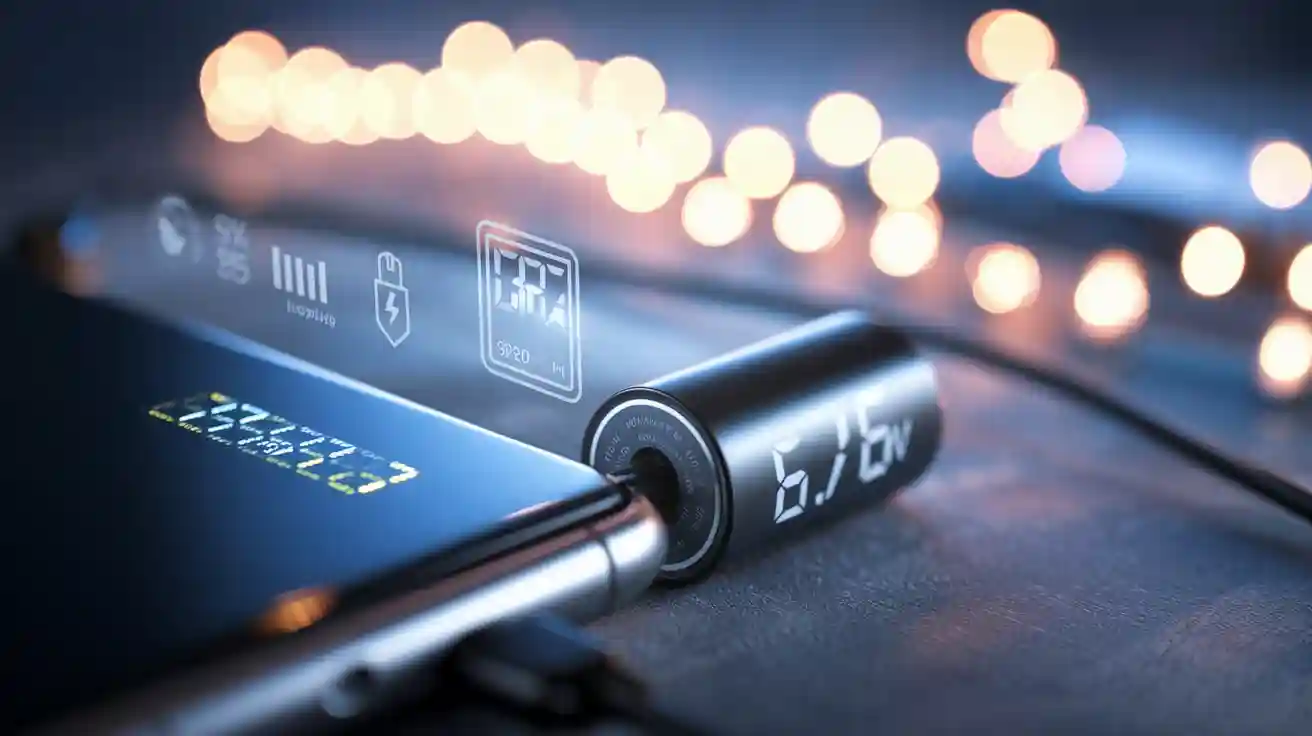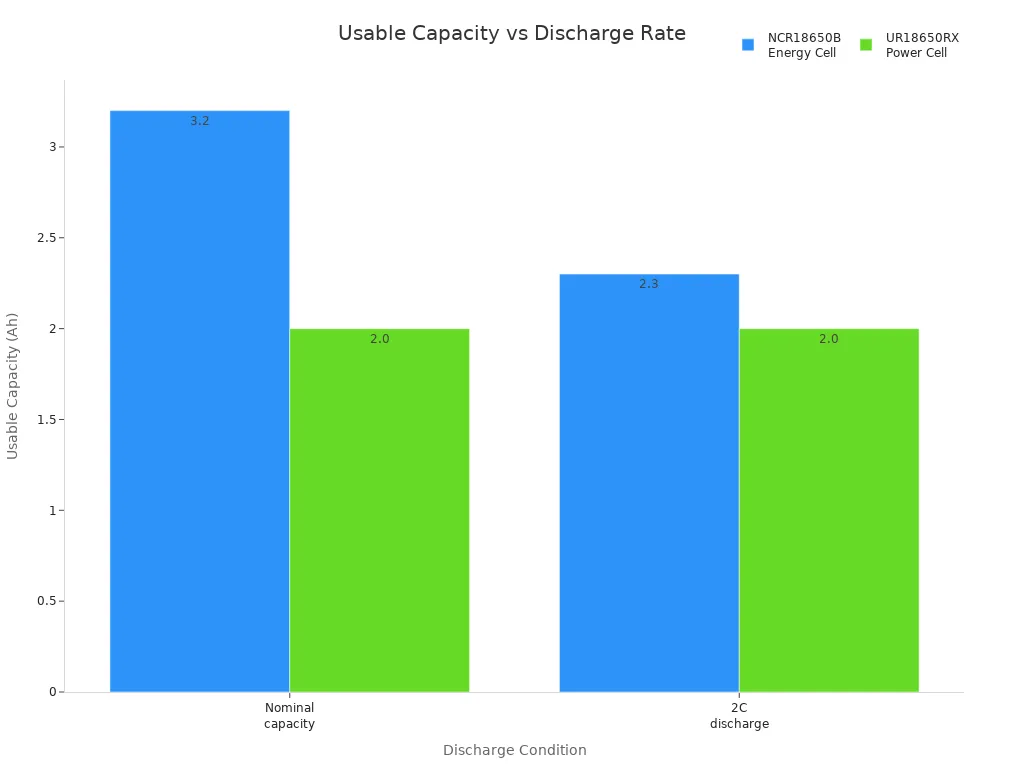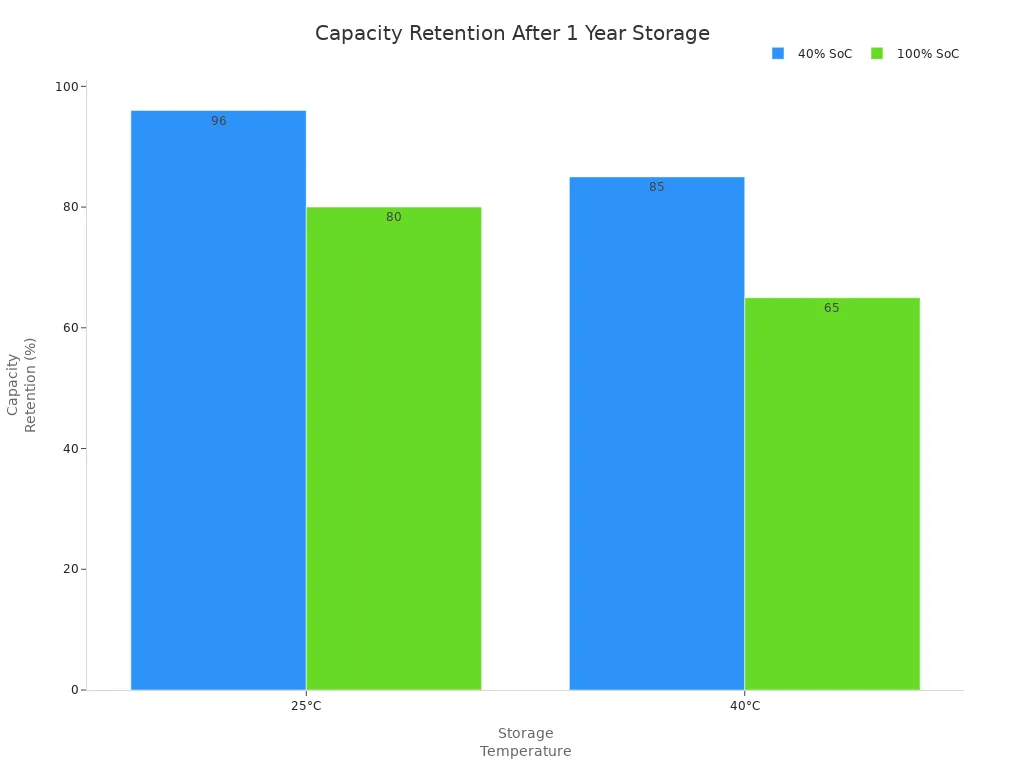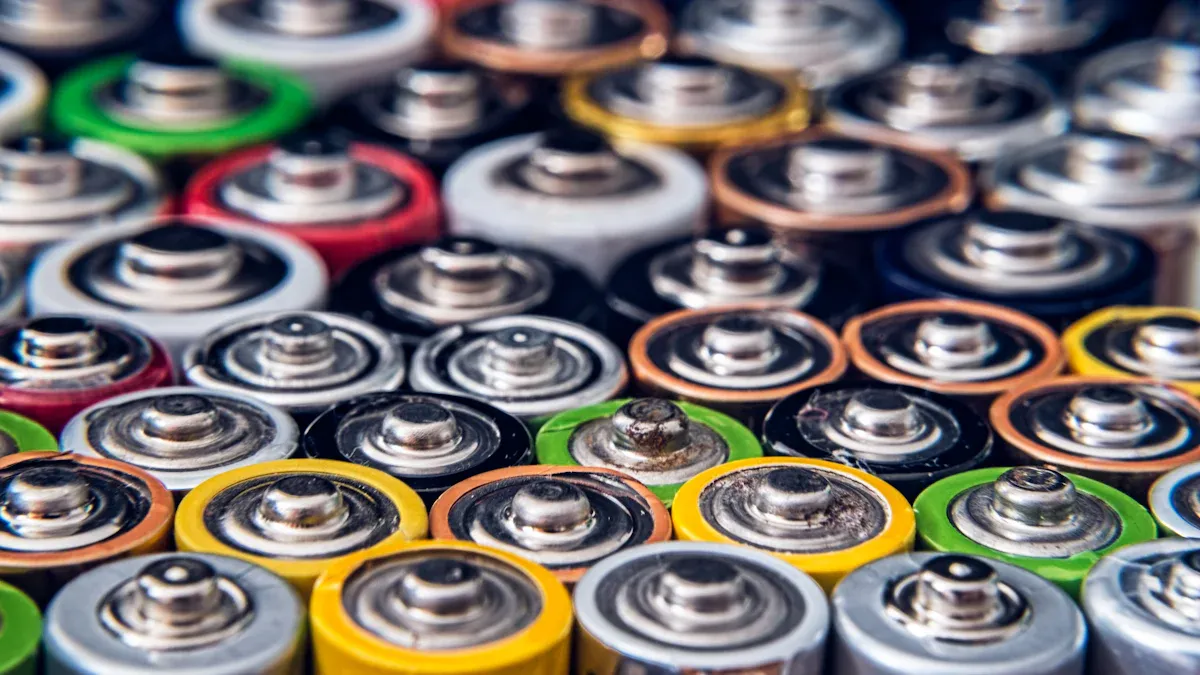
A 3.7V lithium-ion battery capacity rating shows how much energy the battery can store and deliver to a device. This rating, measured in milliamp hours (mAh), tells users how long a device like a smartphone or tablet can operate before needing a recharge. For example, a li-ion battery with a higher mAh value in a tablet or phone means longer usage time. The iPad Pro 12.9″ uses a lithium-ion battery rated at 11,664 mAh, which supports up to 10 hours of use. Device performance depends on more than just the lithium-ion battery’s capacity. Factors such as voltage, discharge rate, and battery health also play important roles. When users understand these lithium-ion and li-ion battery characteristics, they can make better choices for their devices.
Lithium-Ion Battery Basics
Напряжение
A lithium-ion battery uses a nominal voltage to describe its average output during discharge. Most 3.7V lithium-ion batteries have a nominal voltage between 3.6V and 3.7V per cell. This value comes from the electrochemical characteristics of the battery materials. The full charge voltage reaches 4.2V, while the cut-off voltage sits near 3.0V. Battery management systems keep the voltage within these limits to protect the battery and maintain safety. These voltage points help with accurate capacity estimation and ensure the battery works well in different devices. The voltage range also affects energy density and overall battery characteristics.
Вместимость
Capacity estimation helps users understand how much energy a lithium-ion battery can store and deliver. Manufacturers measure capacity in milliamp hours (mAh). The actual capacity depends on the battery’s size, chemistry, and design. The table below shows typical capacity ranges for common lithium-ion battery types:
| Battery Type/Size | Typical Capacity (mAh) |
|---|---|
| Micro lithium batteries (smallest sizes) | 18 – 65 |
| Grepow LiPo batteries (various shapes) | 22 – 1500 |
| 18650 lithium-ion battery (cylindrical) | ~2600 |
Capacity estimation allows users to compare different batteries and select the right one for their needs. Larger capacity means longer device runtime, but also affects weight and size. Accurate estimation of capacity and energy density supports better device performance.
Importance
Capacity estimation plays a key role in choosing a lithium-ion battery for any device. Devices like smartphones, laptops, and wearables rely on correct estimation of battery capacity for longer use between charges. High-capacity batteries provide more energy without making devices too heavy. Reliable capacity estimation ensures that medical and industrial equipment can operate without interruption. The characteristics of a li-ion battery, such as voltage and energy density, influence how well it fits a specific application. Good estimation of these characteristics helps users balance runtime, size, and weight. Proper estimation also supports longer battery life and better device performance.
Tip: Always check the manufacturer’s specifications for capacity estimation and other battery characteristics before selecting a li-ion battery for your device.
Discharge Curves

Curve Shape
A discharge curve shows how the voltage of a lithium-ion battery changes during use. The curve starts at a high voltage, usually around 4.2V, when the battery is fully charged. At the beginning of the process, the voltage drops quickly to about 3.7V. This first drop is short. After this, the curve enters a long, flat region called the plateau. In this phase, the voltage stays steady for most of the discharge process. This flat discharge curve is a key characteristic of lithium-ion batteries. The plateau region shows that the battery can deliver power at a stable voltage, which helps devices run smoothly. Near the end of the process, the voltage falls sharply toward the cut-off point, usually around 3.0V. This steep drop signals that the battery is almost empty. The shape of the discharge curve—quick drop, long plateau, and final steep decline—reflects the stable discharge performance and capacity estimation of the battery. Incremental capacity analysis uses the incremental capacity curve to study these changes and improve online capacity estimation and prognostics.
Voltage Range
The voltage range during the discharge process is important for battery health and safety. A typical lithium-ion battery operates between 4.2V (full charge) and 3.0V (cut-off). The plateau region, where the voltage stays near 3.7V, represents the main working phase of the battery. Discharging below 3.0V can damage the battery and reduce its capacity. The process of capacity estimation relies on keeping the voltage within this safe range. The incremental capacity curve helps track changes in voltage and capacity during the process. Online capacity estimation uses these curves to monitor battery health and predict battery performance. The charge-discharge curves show how the voltage drops gradually, with the flat discharge curve indicating a healthy battery. The characteristics of the voltage range help users avoid over-discharge and maintain good battery health.
Health Indicators
Discharge curve analysis provides important clues about battery health. A healthy battery shows a long, flat plateau on the discharge curve, low internal resistance, and stable temperature. As the battery ages, the plateau becomes shorter and more sloped. The voltage drops faster near the end of the process, and the battery’s capacity decreases. Incremental capacity analysis and the incremental capacity curve reveal these changes by highlighting shifts in the curve’s shape. Online capacity estimation uses these features to predict battery health and support prognostics. The table below summarizes key health indicators found in discharge curve analysis:
| Indicator | Здоровая батарейка | Разряженная батарея |
|---|---|---|
| Плато напряжения | Длинные и плоские | Короткие и покатые |
| Падение напряжения вблизи конца | Постепенно | Быстрая |
| Внутреннее сопротивление | Низкий | Высокий |
| Емкость разряда | Высокий | Снижение |
| Температурный профиль | Стабильный | Больше переменных |
Monitoring these characteristics helps users predict battery health and plan for replacement. Incremental capacity analysis and charge-discharge curves support accurate capacity estimation and online capacity estimation. Prognostics based on discharge curve analysis can extend battery life and improve device reliability.
Note: Higher discharge rates change the shape of the discharge curve. At high rates, the plateau becomes shorter and the voltage drops faster. This happens because internal resistance and polarization increase, which lowers the effective voltage and reduces capacity. Incremental capacity analysis and the incremental capacity curve help track these effects and support prognostics and online capacity estimation.
Discharge Characteristics
Температурные эффекты
Temperature has a strong influence on the discharge characteristics of lithium-ion batteries. When the temperature drops below 0°C, the internal resistance increases, and the discharge curve shows a sharp decline in capacity estimation. At low temperatures, the discharging process slows, and the battery provides less energy. For example, a 150Ah lithium-ion battery pack can lose much of its usable capacity when the temperature falls from 18°C to 0°C. High temperatures, above 35°C, speed up the chemical reactions inside the battery. This can temporarily boost battery performance, but it also causes faster degradation and shortens battery life. The best temperature range for the discharging process is between 15°C and 35°C. Charging or discharging outside this range can damage the battery and reduce health. The table below summarizes the effects of temperature on discharge characteristics and health:
| Temperature Range | Влияние на производительность | Recommendations |
|---|---|---|
| Below 0°C (-32°F) | Electrolyte freezing, significant capacity loss | Avoid usage; use insulation or warming |
| 15°C to 35°C (59°F to 95°F) | Optimal performance, maximum efficiency | Best for usage and charging |
| 35°C to 60°C (95°F to 140°F) | Overheating, reduced lifespan, risk of thermal runaway | Use cooling systems to manage temperature |
| Above 60°C (140°F) | Severe degradation, high safety risk | Avoid at all costs; ensure proper ventilation |
Note: Always allow the battery to cool below 40°C before charging after high-temperature use to protect health and extend life.
Скорость разряда
The discharge rate, or C-rate, describes how quickly a battery releases its stored energy. High discharge rates increase internal resistance and temperature, which can cause the discharge curve to drop faster and reduce usable capacity. For example, the Panasonic NCR18650B energy cell loses about 30% of its capacity at a 2C discharge rate, while a power cell like the UR18650RX keeps almost full capacity at the same rate. This difference in discharge characteristics shows why capacity estimation and cell selection matter for battery health and life. The chart below compares usable capacity at different discharge rates:

- High discharge rates cause more heat and stress, which can speed up degradation and reduce life.
- Moderate discharge rates help maintain health and stable discharge curves.
- Cells designed for high discharge rates show better capacity estimation and longer life.
Срок службы батареи
Battery age affects discharge characteristics and health over time. As a lithium-ion battery ages, the discharge curve becomes shorter and steeper. The capacity estimation process shows a steady decline in usable capacity. Incremental capacity analysis helps track these changes by examining the discharge curve and identifying early signs of health loss. Older batteries show more rapid voltage drops during the discharging process, and their ability to hold charge decreases. This process leads to shorter device runtime and signals when replacement is needed. Regular monitoring of discharge curves and capacity estimation supports better prognostics and helps users plan for battery replacement, ensuring reliable battery performance and longer device life.
Optimal Lithium-Ion Usage
Charging Tips
- Use a charger that matches the battery’s voltage and current ratings. This keeps the charging process safe and supports long battery life.
- Charge with the constant current/constant voltage (CC/CV) process. Stop charging at the constant voltage phase to protect battery health.
- Lower the maximum charge voltage slightly, such as by 0.1V, to increase battery life.
- Avoid overcharging. Unplug the charger when the battery is full or use a smart charger with overcharge protection.
- Charge between 20% and 80-90% state of charge. This process reduces stress and extends the life of the battery.
- Charge at moderate temperatures, between 15°C and 35°C, to prevent damage and keep the process stable.
Tip: Careful charging reduces mechanical damage inside the battery and helps maintain health over many cycles.
Discharging Tips
- Recharge the battery when it drops to about 20%. Avoid deep discharges to protect capacity and life.
- Keep the discharge process within the recommended voltage window, usually between 3.7V and 4.05V or 4.15V. This process prevents damage and supports long life.
- Do not set the cutoff voltage too low. Discharging below 3.0V can harm the battery and shorten its life.
- Use partial discharges. Regularly cycling between 20% and 80% state of charge helps the process and extends battery life.
- Monitor the battery’s temperature during the process. High heat during discharge can reduce health and life.
Хранение
For long-term storage, keep the battery at о заряде 50%. Store it in a cool, dry place, ideally between 20°C and 25°C. This process slows down aging and preserves capacity and health. Avoid storing batteries fully charged or at very low charge levels. High temperatures and full charge during storage speed up the aging process and reduce life.

Note: Batteries stored at 40-50% charge retain more capacity and life after one year than those stored fully charged, especially at higher temperatures.
Увеличение продолжительности жизни
To maximize the life of a lithium-ion battery, follow these best practices:
- Keep the charge between 20% and 80% during daily use. This process reduces stress and supports long life.
- Avoid deep discharges and overcharging. Both can damage the battery and shorten its life.
- Use the correct charger and avoid extreme temperatures during the process.
- Store unused batteries at about 50% charge in a cool, dry place to protect health and capacity.
- Update device software to benefit from improved battery management and process control.
- Perform occasional full charge and partial discharge cycles for calibration, but do not make this a regular process.
By following these tips, users can extend the life of their batteries, maintain health, and ensure reliable performance. Each process, from charging to storage, plays a key role in preserving capacity and supporting the battery’s life.
Li-Ion Battery Selection

Choosing Capacity
Selecting the right capacity for a battery in different applications requires careful planning. Device designers must first understand how much power the device uses and how long it needs to run. For example, if a device uses 6 watts and needs to work for 4 hours, the required capacity can be calculated using this formula:
Capacity (Ah) = Power (W) × Time (h) / Voltage (V)
So, for a 3.7V battery:
6W × 4h / 3.7V = 1.62Ah (1620mAh).
When choosing capacity, users should also consider the full life cycle cost. This includes the initial price, maintenance, and replacement. High energy density allows smaller batteries to fit into compact applications, which is important for devices with limited space. The система управления батареей helps monitor and protect the battery, making sure it lasts longer and works safely. Other factors include whether the battery is rechargeable, the device’s voltage needs, self-discharge rate, and the number of charge cycles. Designers must also check the size and shape to ensure the battery fits the device.
Tip: Always match the battery’s capacity to the device’s current draw and usage pattern for the best performance.
Application Fit
Every application has unique power and safety needs. Matching the battery’s discharge characteristics to the application helps devices run smoothly and reliably. For example, some applications need high discharge rates, while others require steady, long-lasting power. The battery management system plays a key role in monitoring discharge rates and keeping the battery within safe limits.
If the battery’s specifications do not match the application, safety risks increase. Overcharging, over-discharging, or using the wrong battery type can cause overheating, fires, or device failure. The table below shows some safety risks and related standards:
| Safety Risk | Описание | Стандарт |
|---|---|---|
| Перезарядка | Can cause fires or explosions | IEC 62133 |
| Чрезмерная разрядка | Damages battery and reduces performance | IEC 62133 |
| High Temperature | Leads to capacity loss and fire risk above 80°C | UL 1642 |
| Mechanical Damage | Physical shock can cause internal short circuits | UL 2580 |
| Transport Hazards | Mishandling during shipping can cause accidents | UN/DOT 38.3 |
Proper battery selection ensures that applications receive enough power without risking safety. Engineers use battery profiling and emulators to test how batteries perform in different applications. This helps them design systems that last longer and work safely. By matching the battery’s discharge rate and capacity to the application, users can prevent unexpected shutdowns and extend device life.
Understanding lithium-ion battery ratings and following best practices helps users achieve longer battery life and reliable device operation. Key steps include charging within safe voltage and temperature ranges, avoiding deep discharges, and storing batteries below full charge. Users should select batteries with built-in protection and monitor temperature during charging to prevent damage. These habits, supported by scientific research and manufacturer guidelines, help maintain capacity and keep devices running safely.
- Charge between 15°C and 45°C.
- Avoid deep discharges below 3.0V.
- Store batteries at less than 80% charge for long-term health.
ЧАСТО ЗАДАВАЕМЫЕ ВОПРОСЫ
What does the 3.7V rating mean on a lithium-ion battery?
The 3.7V rating shows the battery’s average voltage during use. This value helps users know if the battery matches their device’s needs. Devices work best when the battery voltage fits their design.
How can someone extend the life of a lithium-ion battery?
Users can keep the battery between 20% and 80% charge. They should avoid deep discharges and high temperatures. Storing the battery at about 50% charge in a cool place also helps.
Why does battery capacity decrease over time?
Battery capacity drops as the battery ages. Chemical changes inside the battery cause this loss. High temperatures and frequent deep discharges speed up the process.
Is it safe to use any charger with a lithium-ion battery?
Only use chargers that match the battery’s voltage and current ratings. Using the wrong charger can damage the battery or cause safety risks.
What happens if a lithium-ion battery gets too hot?
High heat can damage the battery. It may lose capacity faster or even become unsafe. Always keep batteries away from direct sunlight and heat sources.

